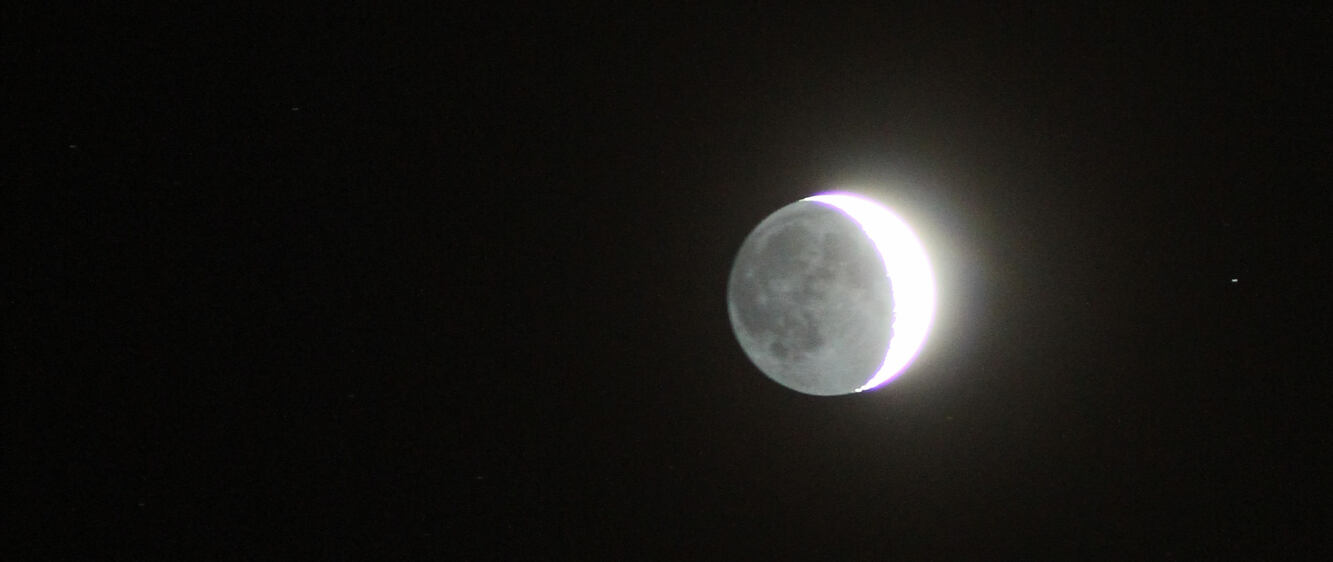
Conferencia 13 de abril: ¿Libertad para qué? Racionalidad y conciencia (Mª José Frápolli)
El Seminario Galileo Galilei de la UGR, Granada Laica y UNI Laica, tienen el placer de invitarles a la séptima sesión de su VI ciclo de conferencias, de título global "La libertad de conciencia. Filosofía, ciencia y derecho".
TÍTULO: '¿Libertad para qué? Racionalidad y conciencia'.
CONFERENCIANTE: Mª José Frápolli Sanz (Catedrática de Lógica y Filosofía de la Ciencia en la Universidad… http://www.escepticos.es/node/8705?utm_source=dlvr.it&utm_medium=mastodon
WHERE WE ARE NOW
HOW WE GOT HERE
WHERE WE’RE GOING
What human industry has done since 1990, pumping nearly a *trillion* tons of CO2 into the air, has no precedent. Never before in Earth’s history has so much carbon dioxide been added to the atmosphere over such a short period of time.
Because human lifespans are short, three decades may seem like a long time to us — but in geological terms, that’s merely the blink of an eye. On such a scale, it’s literally as if we have detonated a bomb.
See — https://climatejustice.social/@breadandcircuses/110140490758294178
Catastrophic climate change has sometimes occurred incredibly quickly in the Earth’s past, in the time before humans evolved, with temperature swings of at least 10°C (18°F) happening in only a few decades. Scientists don’t yet know exactly what factors may have produced such dramatic fluctuations, but they do know for certain that they occurred. And if such a thing has happened previously, it can do so again.
Given what we are now doing to the atmosphere and the oceans, on a scale Nature never accomplished, it’s no surprise that the climate is responding with a rapid rise in global average temperature. It’s hot, and getting hotter, and with an El Niño predicted for later this year, we can expect even worse.
See — https://climatejustice.social/@breadandcircuses/110135242536300627
Moreover, climate change not only means warmer temperatures and sea level rise and more storms and floods and droughts, it also means changes in ocean chemistry. The ocean currently stores 50 times more carbon than the atmosphere, and 20 times more than land plants and soil combined. It’s not certain, however, whether this ratio will be sustainable.
More than 90 percent of the excess heat trapped in the Earth system due to human-caused global warming has been absorbed by the oceans. But as the ocean continues to warm like the rest of the planet, its waters are projected to become less efficient at taking in carbon dioxide, and can even release it back into the atmosphere more rapidly.
Also, the more CO2 the ocean takes up, the more acidic its waters become. After years of working overtime to take in some of the excess CO2 we’ve put in the atmosphere, ocean acidification has already increased 30% compared to preindustrial levels, and could increase an additional 120% by 2100. That, in turn, could lead to severe disruptions in the worldwide food chain, followed by famine and starvation such as we’ve never seen.
I wish I was exaggerating. But I’m not. We are in grave danger.
So…… our “leaders” know all this. And how have they responded?
By burning more carbon!!
#Environment #Climate #ClimateChange #ClimateCrisis #ClimateAction #ClimateEmergency #CO2 #Emissions
2/ About 40,000 years from now, I will pass within 1.65 light-years of the star Ross 248, and be closer to it than to the Sun, but the reality is that 1.65 light-years is still an insurmountable distance. Every other star I will pass within the next _million_ years will be more than 2 light years from me. It is very likely that I will not _ever_ encounter anything. I will last longer than humans, longer than Earth, longer than the Sun. I will see the merger between the Milky Way & Andromeda galaxies,& possibly be flung out of the combined supergalaxy into truly, truly, empty space. I will see the last of the stars extinguish, & the flashes of evaporating black holes. Eventually the matter that I was made of back on Earth will reach a time where my protons will decay, and I will simply fade away, along with the last of the longest wavelengths of light, stretched out by the expansion and cold death of the universe.
Hoy se inaugura #GALACTICA en Arcos de las Salinas, un centro de divulgación astronómica impresionante. #CEFCA
https://galactica.org.es/
2743. Hand Dryers
title text: I know hand dryers have their problems, but I think for fun we should keep egging Dyson on and see if we can get them to make one where the airflow breaks the speed of sound.
(https://xkcd.com/2743)
(https://www.explainxkcd.com/wiki/index.php/2743)
¡Seguimos ampliando la guía de iniciación a la astronomía en "El séptimo cielo"! Ya está disponible la entrega número 11, dedicada a cómo observar los planetas con telescopios sencillos. Con dibujos de Leonor Ana Hernández (¡gracias!):
Acceso a todos los capítulos publicados hasta ahora:
Todo ello en el portal "El séptimo cielo":
https://elseptimocielo.fundaciondescubre.es/
Un portal de la Fundación Descubre:
Seguiremos añadiendo entregas a la guía de inicio.
El (ejem) recorte de privilegios del Gobierno a la Iglesia española en mi tira dominical de @eldiarioes : "Uno de los nuestros".
https://www.eldiario.es/opinion/uno-de-los-nuestros_131_10089135.html
Mi estas ĉi tie!
@enricpineda https://mastodont.cat/@enricpineda/110099989892791749
Several have asked about the clarity of the air at the surface of Venus.
It's really not that bad.
here's an article that will help.
https://universemagazine.com/en/the-last-photos-from-the-surface-of-venus-are-forty-years-old/
Es un clásico, pero siempre funciona...
Por algo es un buen efecto óptico 😉
La explicación: Cuando lees el texto de la imagen usas tu fóvea (el centro de tu visión, la que te da la máxima resolución) dejando tu visión periférica (con menos resolución) para los círculos, que, por el patrón de blancos y negros de forma entrelazada, genera una imagen confusa. Cuanta más grande mires la imagen, el efecto será más potente porque estarás usando más retina periférica
Time of year to repeat an unpopular opinion: #EarthHour is an unfortunate #WWF initiative, allowing municipalities and companies to do #greenwashing for 1 hour, when they could do it on all the other nights of the year. The aim of the initiative is to raise awareness on the reduction of energy, but systematically omitting the impacts of artificial light at night #ALAN #lightpolution. It's a pity, because reducing light always brings about reducing energy, while the reverse is not true.
"A call for scientists to halt the spoiling of the night sky with artificial light and satellites," by Fabio Falchi, @pawley, @raulclima, P. Cinzano and yours truly, published in Nature Astronomy.
https://www.nature.com/articles/s41550-022-01864-z
Free reading here:
https://rdcu.be/c727x
Be sure to read this article by Fabio Falchi and collaborators recently out in Nature Astronomy: https://www.nature.com/articles/s41550-022-01864-z
El Index librorum prohibitorum (Índice de libros prohibidos) fue una lista de aquellas publicaciones que la Iglesia católica catalogó como heréticas, inmorales o perniciosas para la fe y que los católicos no estaban autorizados a leer. Además, establecía las normas de la Iglesia respecto a la censura de los libros. Fue promulgado por primera vez a petición del Concilio de Trento por el Papa Pío IV el 24 de marzo de 1564 —impreso en Venecia por Paolo Manuzio—. El Index conoció más de cuarenta ediciones, a cargo de la Congregación del Índice, creada por el papa Pío V en 1571. La última edición fue la de 1948 hasta que el 8 de febrero de 1966 el papa Pablo VI lo suprimió.
En el Index aparecían tres listas que agrupaban:
-Todas las obras y escritos de un autor prohibido.
-Libros específicos de un autor prohibido.
-Escritos específicos de un autor incierto.
Algunos autores notables cuya obra completa integraba la lista son los siguientes:
Erasmo de Róterdam (1500)
François Rabelais
Giordano Bruno (1600)
Thomas Hobbes (1649-1703)
David Hume (1761-1872)
Denis Diderot
Honoré de Balzac
Émile Zola (1894-1898)
Anatole France (1922)
Henri Bergson (en 1914)
Maurice Maeterlinck
André Gide (1952)
Jean-Paul Sartre (1959)
Entre los libros específicos se encontraban:
De revolutionibus orbium coelestium de Nicolás Copérnico (1616-1835)
In Job commentaria de Diego de Zúñiga (1616)
Diálogos sobre los dos máximos sistemas del mundo de Galileo Galilei (1633-1822)
The arrangment de Francis Bacon (1668)
Los libros filosóficos de René Descartes (en 1663)
Ensayos de Michel de Montaigne (1676)
Tratado teológico-político y Opera posthuma de Baruch Spinoza (1679)
La Encyclopédie ou Dictionnaire raisonné des sciences, des arts et des métiers de Diderot y d'Alembert (en 1757)
Pensées, avec les notes de Voltaire de Blaise Pascal (1789)
Pamela o la virtud recompensada de Samuel Richardson (1740)
El contrato social y Emilio, o De la educación de Jean-Jacques Rousseau
Crítica de la razón pura de Immanuel Kant (1827)
De l'Allemagne de Joachim Heine (1836)
Los Papas romanos, su Iglesia y su Estado en los siglos XVI y XVII de Leopold von Ranke (1837)
Rojo y negro de Stendhal (1848)
Cours de philosophie positive de Auguste Comte (1864)
Los miserables y Nuestra Señora de París de Victor Hugo (1834–1869)
Algunas obras de Alexandre Dumas (padre) (1863)
Las novelas de George Sand (1840)
Principios de economía política de John Stuart Mill (1856)
Varias obras de Alexandre Dumas (hijo) (todas sus novelas románticas en 1863 y La question du divorce en 1880)
Madame Bovary de Gustave Flaubert (1864)
Historia de la decadencia y caída del Imperio romano de Edward Gibbon (1873)
Justine o los infortunios de la virtud y Juliette o las prosperidades del vicio del Marqués de Sade
Science de l'homme de Claude Henri Saint-Simon
El Grand Dictionnaire universel du XIXe siècle de Pierre Larousse (1878)
Prólogo de Emilio Castelar a la Historia general de la masonería de G. Danton
Las novelas de Gabriele D'Annunzio (en 1911)
Het volkomen huwelijk (El matrimonio perfecto), 1926 de Theodoor Hendrik van de Velde traducido al inglés, alemán, francés
El segundo sexo de Simone de Beauvoir (1956)
Adelantamos la portada del número 58 de El Escéptico
El número 58 de El Escéptico, la revista para el fomento de la razón y la ciencia, ya está en imprenta, y pronto se distribuirá entre los socios y suscriptores. La portada está dedicada al dossier sobre laicismo y escepticismo que incluye en sus páginas interiores.
El Escéptico es una revista creada por ARP Sociedad para el Avance del Pensamiento Crítico para impulsar el desarrollo de la ciencia, el pensamiento crítico, la… http://www.escepticos.es/node/8696?utm_source=dlvr.it&utm_medium=mastodon
Veinticinco años de éxitos. Hoy, 23 del 3 de 2023 (no hay dos sin tres), se cumplen veinticinco años de la defensa pública de mi tesis doctoral. Con motivo de tan magna efeméride os recuerdo el enlace al artículo de mi portal en el que doy todos los detalles de aquella aventura:
https://galadi.net/tesis/
galadi.net -- astrónomo cordobés
